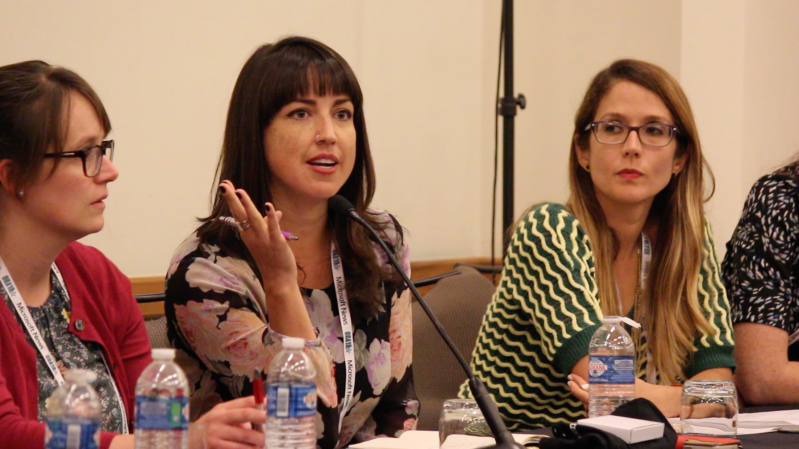Meredith Clark remembers the moment she felt stunned when she laid eyes on the cover of the Lexington Herald-Leader in 2004. Clark’s hometown newspaper had run a correction apologizing for a “major historical failure” to cover the civil rights movement – an apology delivered 40 years later.
This struck the University of Virginia professor as an issue the United States continues to face today: a lack of diversity in America’s newsrooms.
It is disappointing that newsrooms continue to lack diversity, said Mandy Jenkins, a member on the board of directors at American Society of News Editors (ASNE).
“We’re not even close to achieving that in the industry,” Jenkins said. “We’ve seen the numbers every year and they don’t get better.”
In 2016, approximately 16.9 percent of employees reported by newsrooms were diverse, a substantial increase from 2015 when newsrooms were reported to be 12.7 percent diverse. Despite this increase, the number slightly decreased to 16.5 percent in last year’s study.
https://e.infogram.com/js/dist/embed.js?rOU
Newsrooms fail to participate in diversity survey year
If the ASNE’s annual diversity survey is any indication, American newsrooms may not be taking this matter seriously. For the first time since conducting the survey in 1987, participation from newsrooms was so low ASNE decided to delay releasing the results until next month in hopes that more newsrooms will send in their numbers. The organization usually releases its results in early September.
Out of 1,700 newspaper and digital media outlets, only 234 participated this year, according to a press release from the National Association of Hispanic Journalists. The group along with the National Association of Black Journalists (NABJ), the Asian-American Journalists Association (AAJA), Native American Journalists Association (NAJA) and The Association of LGBTQ Journalists (NLGJA) say they are disturbed by this year’s lack of participation and urged media companies to get their numbers in by the new deadline of Oct. 12.
Getting survey results is challenging
Jenkins says a number of challenges face the group when surveys are distributed. From busy schedules to refusing to reveal the demographics of a newsroom, a few obstacles occur throughout the collection of data.
Clark, who leads the survey for ASNE, adds that because the survey team is small, constant reminders need to be sent to newsrooms to fill out the study.
“We know that newsrooms are facing cuts that fewer people are doing more jobs,” Clark said. “If you have someone that’s been responsible for the survey for the last 10 years and that person was downsized, laid off out of your newsroom, the person who did may not be there and may not know that it’s an institutional duty that needs to move from one role to another to make sure there’s consistency in the reporting.”
Finding diversity at home
Despite these challenges, Jenkins is hopeful newsrooms will view the statistics as a chance for change due to the importance of representing various communities in a neighborhood
Clark says sometimes the best form of representation from reporters can be found right at home, by “bringing in members of the communities whose voices haven’t been heard and empowering them to be heard on your pages, in your coverage, on your website, on your broadcast.”
Vanessa Vancour, a faculty member at the University of Nevada, Reno, can attest to Clark’s sentiment when the partnership between her bilingual publication, Noticiero Movil, and KUNR Public Radio hired a bilingual reporter from a previous internship as a result of the partnership.

Vancour adds that the ability to recognize the need for representation and capability to support diverse journalists is crucial.
“The management and the people with power and decision-making power are the ones who have to be willing to invest in hiring but also invest in retention and programs that are supporting people,” Vancour said.“Being able to critically self-reflect is the first part and then there are lots of great resources and people that can help with that. I think the first step is just acknowledging that there’s a problem.”
The means to acknowledge an issue is a common theme throughout discussions on diversity. Clark adds that it takes sustained effort, political will and a fair amount of time for newsrooms to become representative of their communities.
“If we truly want to be arbiter’s of what is right and good in the world, we have to start with ourselves,” Clark said. “Even though we have some problems, I think the best step we have to take is to admit what those problems are, to report the numbers as they are and then to resolve to do better.”







You must be logged in to post a comment.